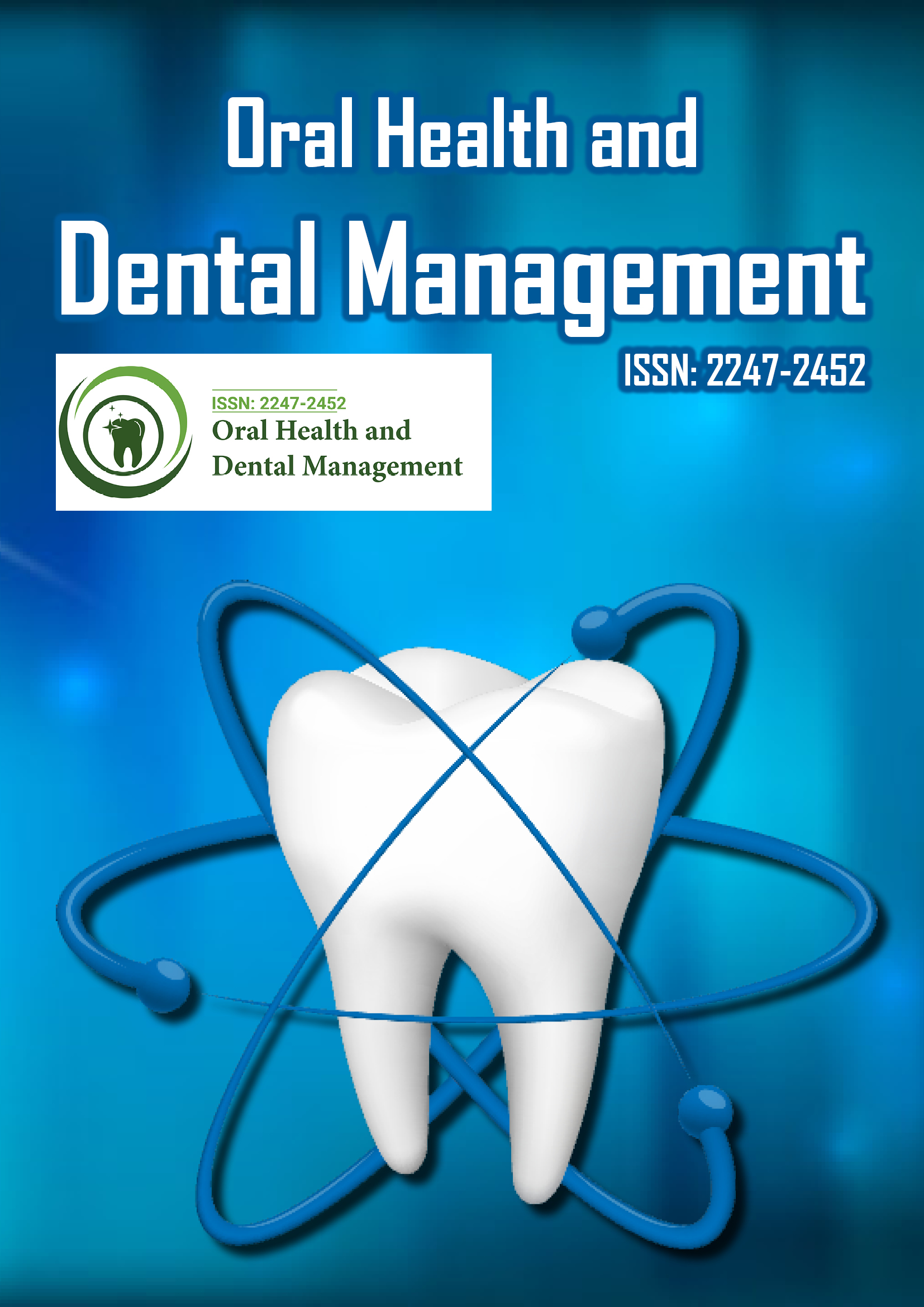Indexed In
- The Global Impact Factor (GIF)
- CiteFactor
- Electronic Journals Library
- RefSeek
- Hamdard University
- EBSCO A-Z
- Virtual Library of Biology (vifabio)
- International committee of medical journals editors (ICMJE)
- Google Scholar
Useful Links
Share This Page
Journal Flyer

Open Access Journals
- Agri and Aquaculture
- Biochemistry
- Bioinformatics & Systems Biology
- Business & Management
- Chemistry
- Clinical Sciences
- Engineering
- Food & Nutrition
- General Science
- Genetics & Molecular Biology
- Immunology & Microbiology
- Medical Sciences
- Neuroscience & Psychology
- Nursing & Health Care
- Pharmaceutical Sciences
Commentary Article - (2024) Volume 23, Issue 2
Oral Health Technologies: New Developments Affecting Modern Dental Practices
Avery Lucas*Received: 27-May-2024, Manuscript No. OHDM-24-26077; Editor assigned: 31-May-2024, Pre QC No. OHDM-24-26077 (PQ); Reviewed: 14-Jun-2024, QC No. OHDM-24-26077; Revised: 21-Jun-2024, Manuscript No. OHDM-24-26077 (R); Published: 28-Jun-2024, DOI: 10.35248/2247-2452. 24.23.1105
Description
Modern dentistry procedures have been greatly impacted by technological advancements in recent years, which have resulted in a new period of innovation and advancement in oral health care. These advancements include a wide range of topics in patient care, treatment techniques, dental diagnostics, and practice administration. The area of oral health technologies is constantly developing, with advancements in digital imaging, robotics, and Artificial Intelligence (AI) improving treatment accuracy and patient experience all round. Dental diagnostics have experienced advancement because of digital imaging technology, which has replaced old radiography with more accurate and efficient techniques. With the use of intraoral and extraoral sensors, digital radiography provides improved image quality, less radiation exposure, and instant image recording. When it comes to difficult situations like implant implantation and orthodontic evaluations, Cone Beam Computed Tomography (CBCT) provides accurate 3D images that are essential for treatment planning.
Dental impressions have experienced a radical change due to intraoral scanners, which use digital images in place of putty-based moulds. With the use of Computer-Aided Design and Computer-Aided Manufacturing (CAD/CAM) technology, these scanners can provide highly accurate photographs of teeth and soft tissues that are then utilized to create crowns, bridges, and aligners. This reduces personal time and patient pain while simultaneously increasing accuracy and compliance. Another important development is the use of robotics in dental operations and surgeries. With the help of pre-programmed instructions based on patient-specific data, robots help with precision activities like implant placement and tooth preparation. Robots improve results, reduce human mistakes, and increase procedural accuracy all of which are especially useful in complex and sensitive processes where accuracy is important.
In dentistry, artificial intelligence is becoming a major advancement for both diagnosis and treatment planning. To give predictive analytics and individualized treatment suggestions, artificial intelligence systems analyse huge amounts of patient data, including clinical records, radiography, and genetic data. Artificial intelligence has the potential to improve treatment outcomes and improve preventative care programs by assisting in the early diagnosis of dental disorders such as periodontal disease and caries. Through the use of telecommunications technology, tele-dentistry platforms provide dental care outside of traditional clinic settings. Dentists may give immediate time advice, monitor the success of treatments, and educate patients using digital communication channels, remote monitoring, and virtual consultations. In addition to enhancing patient satisfaction and overall oral health results, digital dentistry makes dental care more accessible, especially for patients with mobility issues or in areas of poverty.
Dental materials and treatments have experienced a revolution due to advanced biomaterials and nanotechnology. Biomimetic materials resemble the structure of natural teeth, encouraging tissue regeneration and extending the life of restorations. In dental composites, cements, and implants, nanomaterials improve characteristics including strength, durability, and biocompatibility, resulting to better clinical results and satisfaction for patients. Because they provide accurate tissue burning, sterilization, and hemostasis with less discomfort and quicker healing, lasers are becoming a necessary tool for many dental operations. Laser technology offers effective therapeutic alternatives to conventional approaches in the areas of soft tissue operations, cavity preparation, periodontal treatments, and teeth whitening. Procedures using a laser shorten healing times and improve patient comfort both during and after treatment.
Digital dentistry platforms include a variety of technologies that improve processes related to patient care and practice administration. Digital management systems, patient management programs, and Electronic Health Records (EHRs) improve productivity, accuracy, and communication in dental offices. Through digital communication channels, these technologies improve patient involvement, improve communication among dental professionals, and enhance practice productivity. The production of appliances, surgical guides, and dental devices has been entirely transformed by 3D printing technology. 3D printers are used in dental labs to create perfectly fitted and visually appealing customized crowns, dentures, and orthodontic braces. With the help of surgical instructions made from 3D scans, implant placement may be done accurately, improving both patient outcomes and procedural accuracy. This technology lowers expenses, improves production schedules, and gives patients more treatment alternatives.
Conclusion
In conclusion, oral health technologies are dynamic advances in contemporary dentistry practices that are always developing to improve patient comfort, treatment precision, diagnostic capacities, and practice efficiency. Oral health care is advanced by digital imaging, robots, artificial intelligence, tele-dentistry, advanced biomaterials, lasers, digital dentistry platforms, 3D printing, and biomedical engineering advances. In the constantly changing area of oral health, these technologies allow dentists to provide individualized, evidence-based care while enhancing accessibility, treatment results, and general satisfaction with patients.
